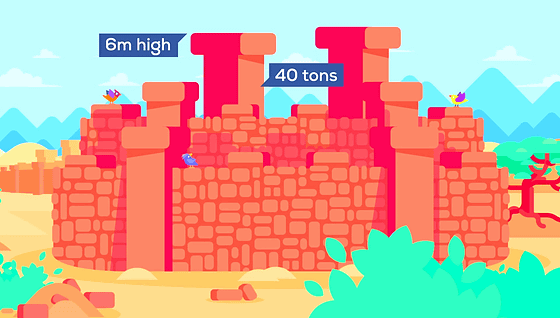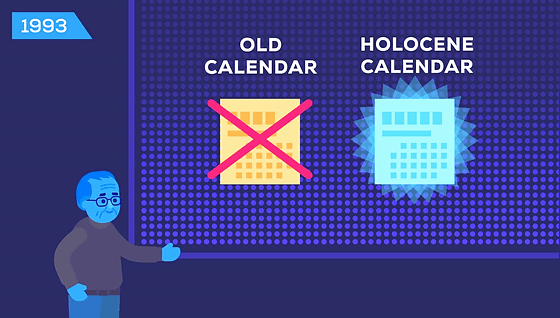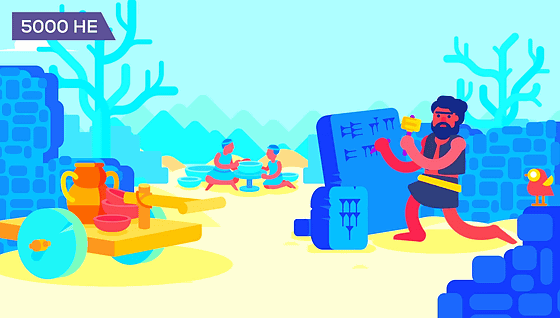Why should we adopt the new calendar 'Holocene calendar (HE)' that replaces the Christian era?

The most widely used calendar in the world '
A New History for Humanity – The Human Era --YouTube
Mankind was the first to rule the earth, and at first he lived by hunting animals as a hunting race.

Mankind soon began to farm ...

In modern times, many civilizations have been invented that were unthinkable in the past.

The Christian era, whose first year is the year after the year when Jesus Christ was born, is one of the inventions of mankind, but Kurzgesagt says that the use of the Christian era will be an outdated way of thinking that is no longer suitable for the present age. I will.

It is said that the idea of 'BC', which represents the year before 1 AD, is a factor that hinders understanding when looking back on the history of humankind.

During BC, humankind continued to develop all over the world, and there were many important events. Therefore, there is an idea that is not based on Jesus Christ but on the origin of civilization.

The standard of the calendar in this way of thinking is 12,000 years before the construction of 'the first temple of mankind'.

It is known that hundreds of people lived in groups on the hills of southern Anatolia 12,000 years ago.

12,000 years ago, humankind was a hunting race with no knowledge of agriculture or metalworking.

The only tools they had were stone tools made of stone and wood, but they built the first megastructure in human history 7,000 years before the first pyramids were built.

That is '

Pictograms and fantasy creatures were carved on the stone pillars.

However, it is still unknown how humans in the

The reason why Gobeklitepe was built is not well understood, but the hypothesis that it is the first temple of mankind dedicated to God is predominant.

It is known that many buildings were built in the same area, including this temple. Mankind's first temple is a rational starting point for mankind's new calendar.

This idea is one of the calendar methods proposed by the geologist Cesare Emiliani in 1993 and is called the 'Human Era'. Human Era is abbreviated as 'HE'.

The Holocene calendar is expressed by adding '10,000 years' to the Christian era, so for example, the year 2017 is 'Holocene calendar 12017 (12017 HE)'. Since the days and months that have already been established remain the same, the feature is that the existing calendar can be used as it is with a little modification.

If the Holocene calendar is adopted, the writing style of human history textbooks will be renewed. The beginning of the calendar is the year when Gobeklitepe was built. The Christian era starts from the year 1, but the human era starts from the year 0 because of the convenience of converting BC.

In the 1000th year of the

It is known that in 2000 AD, agriculture became widespread all over the world, and human beings lived in sedentism everywhere.

Evidence has also been found of trade at that time, thousands of kilometers apart. The world population at this time is estimated to be about 5 million, which is a little smaller than the population of modern London.

In the 3000th year of the Holocene calendar, the use of pottery became popular.

It was around this time that the first cultural community of humankind was born in China, India, and the

Around 4000 AD, human beings began to process copper and tin for the first time to handle metals ...

Entered the 5000 AD of the human race, which is the


In the 7000 AD, the Indus Valley Civilization, the

It is known that Stonehenge was built in England at the same time.

It was around the time when the oldest dynasty, '

The '

The world population has grown to more than 30 million, and this is where the era called 'History of Mankind' begins.

From around 8000 AD, advanced civilizations have emerged all over the world, and many legends have been written down.

In the United States, the

It was around this time that

Huge cities have appeared one after another everywhere ...

Cities other than Egypt have been destroyed, and hundreds of years of records of this era have been lost.

Western culture developed from around 9500 AD, and the

100 years later, the Roman Empire defeated Carthage in the

When

The world population has reached about 300 million.

A wide variety of history has been spelled out until the year 10000 BC, but in the Christian era, this is '1 BC'. After that, the year 1 AD is converted to the year 10001 AD, and the year 2 AD is converted to the year 10002 AD.

Approximately 2000 years after the 10000 AD, humans developed by the time they reached the moon, all of which began when humans built temples 12,000 years ago. Looking at the Holocene calendar in this way, it is clear that the period before the 'era' was expressed in a rather compressed manner.

The movie ends with 'Then, good 1 2017!' In addition, Kurzgesagt has already created a 'holocene calendar', and those who want it can purchase it from the website for $ 25 (about 2800 yen).

Related Posts:







